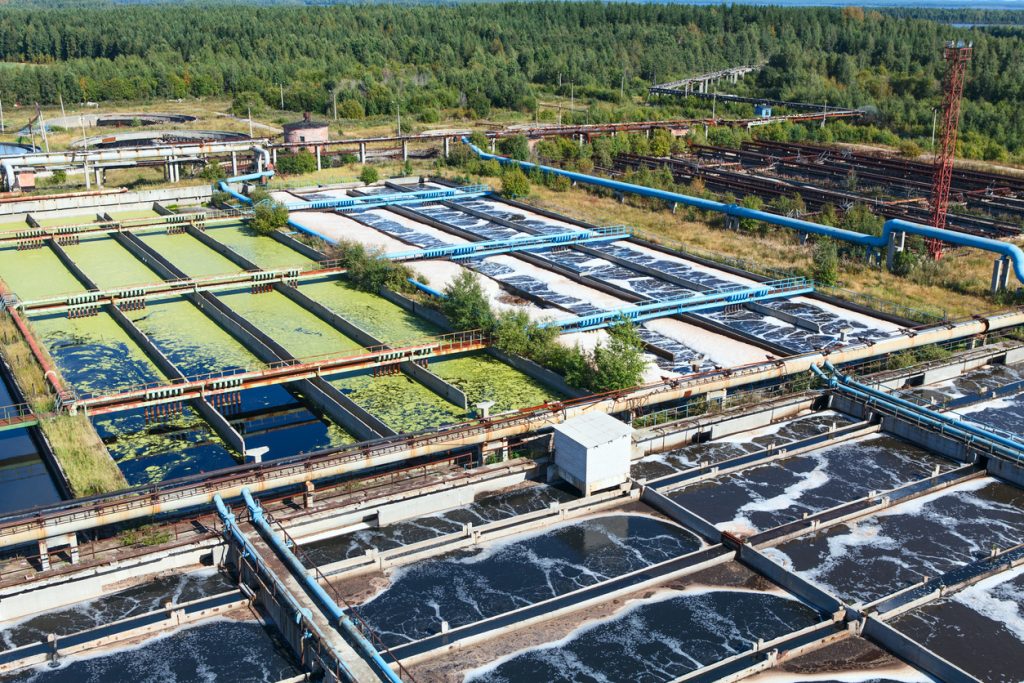The Significance of Chemical Processes in Waste Water Treatment
Strategic Approaches to Boost Waste Water Therapy Efficiency and Reduce Environmental Influence
In the realm of drainage treatment, the mission for enhanced efficiency and lowered ecological influence is a perpetual challenge that demands tactical options. As culture comes to grips with the crucial to take care of water sources sustainably, a nuanced technique becomes vital. The integration of sophisticated treatment innovations, energy-efficient processes, resource recovery strategies, enhanced nutrient removal methods, and clever tracking and control systems represents a diverse structure for attending to these pressing problems. What exists at the core of this complicated internet of methods is the possible to reinvent the means we approach waste water treatment, not just as a process of disposal, yet as a valuable opportunity for innovation and ecological stewardship.
Advanced Therapy Technologies
Advanced membrane filtering systems have actually transformed advanced wastewater treatment procedures, substantially improving the removal of impurities. This modern technology has proven to be highly efficient in removing a wide variety of contaminants, consisting of drugs, hefty metals, and organic compounds, which are commonly challenging to get rid of with standard treatment approaches.
Additionally, membrane filtering systems provide many benefits over traditional therapy methods. In addition, these systems are highly functional and can be easily incorporated right into existing therapy plants or made use of as standalone devices for decentralized applications.
Energy-Efficient Processes
The assimilation of energy-efficient processes in wastewater treatment systems is essential for enhancing source use and minimizing operational prices. By implementing energy-efficient technologies, therapy plants can dramatically decrease their carbon footprint and general ecological impact. One essential approach to boosting energy performance in wastewater treatment is the application of innovative aeration systems, such as fine bubble diffusers or surface area aerators, which can enhance oxygen transfer efficiency and minimize power intake. Additionally, integrating power recovery systems, like anaerobic digestion for biogas manufacturing or making use of excess heat for thermal processes, can aid offset energy demands and advertise sustainability.
Additionally, enhancing procedure control and automation via making use of advanced sensors and monitoring systems can enhance overall energy effectiveness by readjusting operations in real-time based upon real need and problems. Applying power audits and frequently checking power performance indicators are important methods to identify areas for enhancement and track energy-saving efforts successfully. On the whole, the fostering of energy-efficient procedures in wastewater therapy not just benefits the environment yet likewise adds to long-lasting price financial savings and functional sustainability.
Resource Recovery Strategies
With a concentrate on enhancing resource utilization and sustainability in wastewater therapy systems, the application of resource recuperation methods becomes a pivotal facet in improving operational performance. Source recovery strategies in wastewater therapy include the identification and removal of beneficial sources from the waste stream, consequently transforming what was as soon as considered waste right into a beneficial asset. By executing source recuperation web methods such as nutrient removal and recuperation, energy generation from raw material, and the manufacturing of recyclable water, wastewater treatment plants can decrease environmental effect while taking full advantage of efficiency.

Boosted Nutrient Elimination Methods
Executing sophisticated nutrient removal strategies is crucial for maximizing the effectiveness of wastewater treatment systems. Enhanced nutrient elimination plays a critical function in reducing the environmental influence of cured effluent discharged right into water bodies. Among the essential techniques made use of for improved nutrient removal is the procedure of organic nutrient removal (BNR), which involves the elimination of nitrogen and phosphorus with biological procedures. This can be attained via the usage of specialized bacteria that can convert nitrogen substances into inert nitrogen gas with denitrification, and build up phosphorus within their cells through a procedure called improved organic phosphorus removal (EBPR)

In addition to BNR, progressed therapy approaches such as membrane layer bioreactors (MBRs) and built marshes can likewise be utilized to improve nutrient elimination efficiency. By including these innovative nutrient removal methods website here into wastewater therapy industries, districts and systems can properly decrease nutrient pollution and safeguard the setting.
Smart Tracking and Control Equipment
Making use of advanced technology, the assimilation of smart tracking and control systems changes the operational efficiency of wastewater therapy centers. These systems integrate innovative sensors and data analytics to continually keep track of vital parameters such as pH degrees, turbidity, liquified oxygen, and flow rates in real-time. By collecting and assessing this data, operators can acquire valuable insights into the efficiency of the treatment procedures, allowing proactive changes to maximize treatment effectiveness.
Smart tracking and control systems additionally sustain remote tracking capacities, enabling drivers to gain access to real-time data and control functions from off-site places. This remote accessibility enhances operational versatility and responsiveness, allowing speedy interventions in instance of system malfunctions or changes in influent quality. The predictive upkeep capacities of these systems help prevent devices failures and lessen downtime, inevitably enhancing the general reliability of wastewater treatment operations.
Final Thought
To conclude, calculated techniques such as advanced treatment innovations, energy-efficient procedures, resource recovery methods, improved nutrient elimination strategies, and smart monitoring and control systems play a crucial role in boosting wastewater treatment performance and decreasing environmental impact. By applying these methods, wastewater therapy plants can boost their total efficiency, decrease energy usage, recuperate important resources, and guarantee conformity with environmental regulations. These approaches are essential for lasting and reliable wastewater management methods.

In final thought, calculated strategies such as advanced therapy innovations, energy-efficient processes, resource healing approaches, improved nutrient removal methods, and clever tracking and control systems play a crucial function in boosting wastewater treatment performance and reducing environmental effect.